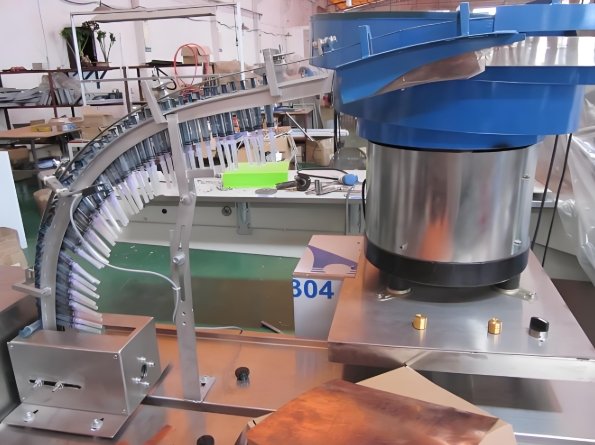
Lean manufacturing improves medical injection molding by reducing waste and increasing efficiency. It focuses on optimizing processes while maintaining quality. Mold makers play a key role in streamlining production and minimizing defects. By adopting lean principles, manufacturers lower costs and enhance productivity.
1. What is Lean Manufacturing?
1.1 Definition
Lean manufacturing eliminates waste while maximizing value. It improves efficiency in medical injection molding.
1.2 Why It Matters
- Reduces material waste.
- Improves cycle times.
- Lowers production costs.
- Ensures product consistency.
1.3 Key Lean Manufacturing Principles
- Value: Delivering high-quality medical parts.
- Flow: Creating smooth, uninterrupted production.
- Pull System: Producing based on demand, not excess.
- Continuous Improvement: Ongoing process optimization.
2. Reducing Waste in Medical Injection Molding
2.1 Minimizing Material Waste
- Scientific molding techniques optimize resin use.
- AI-driven monitoring prevents overuse of raw materials.
2.2 Eliminating Defective Parts
- Automated quality checks reduce human errors.
- Real-time sensors detect defects before production ends.
2.3 Streamlining Mold Changes
- Quick-change mold systems reduce downtime.
- Mold makers design modular molds for flexibility.
2.4 Reducing Overproduction
- Just-in-Time (JIT) manufacturing prevents unnecessary stockpiling.
- Smart demand forecasting improves efficiency.
3. How Mold Makers Support Lean Manufacturing
3.1 Designing High-Precision Molds
- Mold makers create durable, high-quality molds.
- Precision designs reduce production defects.
3.2 Using Multi-Cavity Molds
- Increases output while maintaining part consistency.
- Reduces per-unit manufacturing costs.
3.3 Implementing Hot Runner Systems
- Eliminates sprue waste.
- Improves material efficiency and mold performance.
3.4 Enhancing Mold Longevity
- Mold makers use hardened steel for durability.
- Preventive maintenance extends mold life.
4. Improving Efficiency in Medical Injection Molding
4.1 Optimizing Cycle Times
- Faster cooling systems reduce cycle time.
- AI adjusts settings for maximum efficiency.
4.2 Implementing Smart Automation
- Robotics handle repetitive tasks, reducing labor costs.
- AI monitors production in real time.
4.3 Reducing Downtime with Predictive Maintenance
- IoT sensors detect mold wear before failures occur.
- Scheduled maintenance prevents costly breakdowns.
4.4 Improving Workflow with Lean Layouts
- Arranging machines for smooth material flow.
- Reducing unnecessary movement within facilities.
5. Quality Control in Lean Medical Injection Molding
5.1 AI-Driven Inspection Systems
- Detects defects instantly.
- Ensures every part meets medical industry standards.
5.2 Standardized Work Procedures
- Reduces variations between production runs.
- Improves consistency in medical components.
5.3 Cleanroom Efficiency
- Lean processes maintain sterility in ISO 14644 cleanrooms.
- Smart airflow systems reduce energy waste.
5.4 Data-Driven Continuous Improvement
- AI analyzes production trends for process enhancements.
- Digital tracking ensures full compliance with FDA regulations.
6. Reducing Costs with Lean Medical Injection Molding
6.1 Energy-Efficient Manufacturing
- Electric injection molding machines use 30% less energy.
- Smart scheduling lowers electricity use during peak hours.
6.2 Cutting Labor Costs
- Automation reduces the need for manual operators.
- Trained employees focus on quality control instead of repetitive tasks.
6.3 Eliminating Excess Inventory
- Just-in-Time (JIT) production minimizes storage costs.
- Lean logistics streamline material procurement.
6.4 Sustainable Manufacturing Practices
- Recyclable plastics reduce raw material costs.
- Biodegradable resins support eco-friendly production.
7. Challenges in Implementing Lean Medical Injection Molding
7.1 High Initial Investment in Technology
- Smart machines require upfront costs.
- Long-term savings justify automation expenses.
7.2 Training Employees for Lean Operations
- Workers must adapt to new lean processes.
- Proper training ensures smooth transitions.
7.3 Integrating Lean with Existing Systems
- Legacy machines may not support automation.
- Upgrades are needed for IoT connectivity.
7.4 Maintaining Compliance While Reducing Costs
- Lean strategies must still meet FDA and ISO standards.
- Quality cannot be sacrificed for efficiency.
8. Future of Lean Manufacturing in Medical Injection Molding
8.1 AI-Powered Smart Factories
- Fully automated production lines increase efficiency.
- AI predicts process improvements in real time.
8.2 Blockchain for Supply Chain Optimization
- Tracks materials for transparent cost management.
- Ensures responsible sourcing of medical plastics.
8.3 Digital Twin Technology for Process Simulation
- Virtual testing reduces mold design errors.
- Prevents costly trial-and-error adjustments.
8.4 3D Printing for Prototyping and Customization
- Reduces development costs.
- Enables faster mold testing and modifications.
8.5 Zero-Waste Manufacturing Initiatives
- AI-driven waste reduction strategies.
- Fully recyclable medical components.
Lean manufacturing improves medical injection molding by reducing waste, increasing efficiency, and lowering costs. Mold makers optimize production through better mold design, automation, and smart technology. Lean principles ensure high-quality medical components while maintaining FDA and ISO compliance. As automation and AI continue to evolve, lean strategies will further enhance productivity in medical manufacturing.
